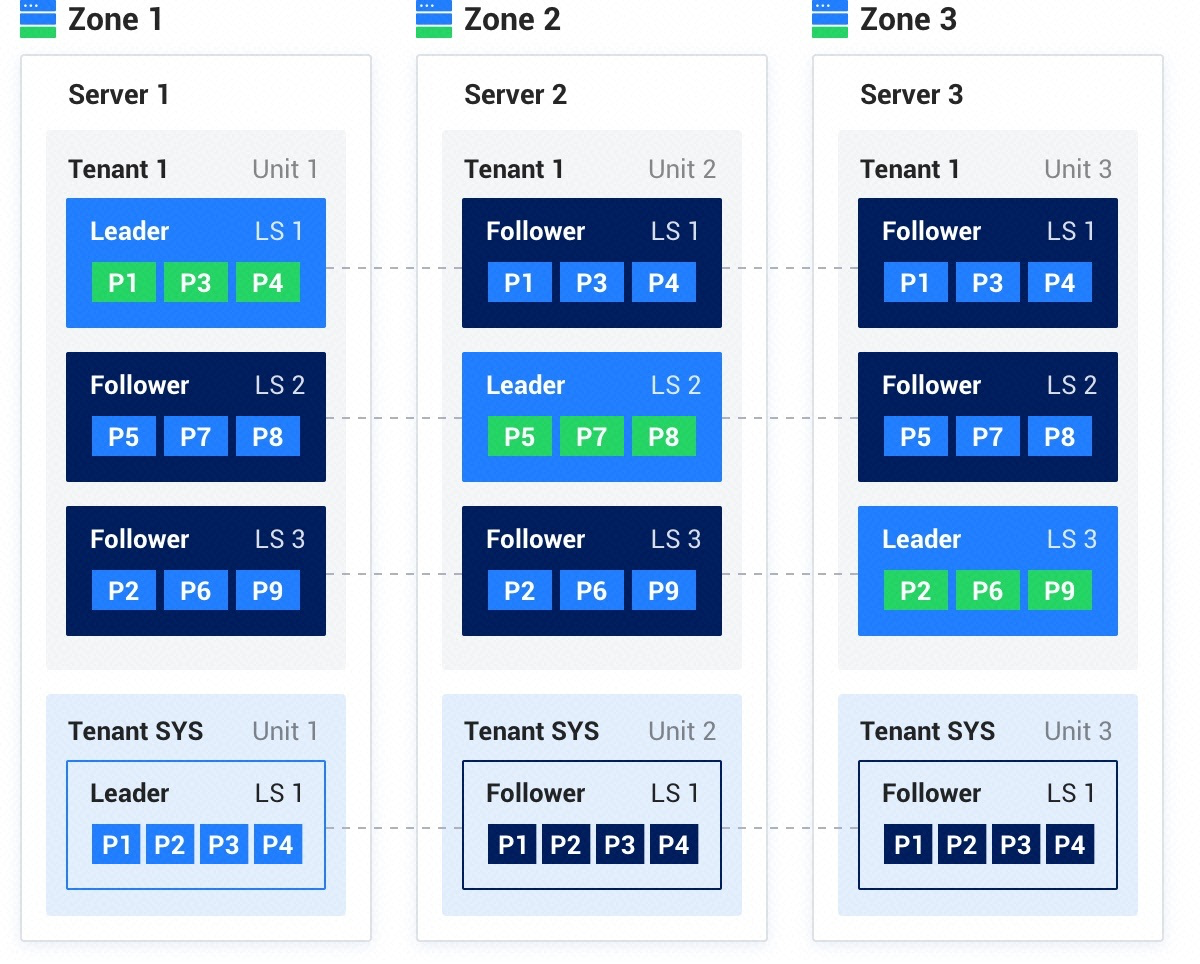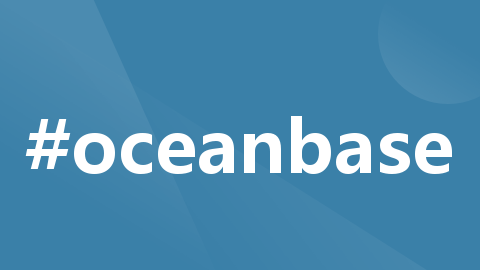
通过OceanBase 3.x中not in无法走hash连接的变化,来看OB优化器的发展
从OB 3.X 到4.x的测试结果,来看OB的优化器的改变
作者简介:
张瑞远,曾从事银行、证券数仓设计、开发、优化类工作,现主要从事电信级IT系统及数据库的规划设计、架构设计、运维实施、运维服务、故障处理、性能优化等工作。 持有Orale OCM,MySQL OCP及国产代表数据库认证。 获得的专业技能与认证包括 OceanBase OBCE、Oracle OCP 11g、OracleOCM 11g 、MySQL OCP 5.7 、腾讯云TBase、腾讯云TDSQ
前言:
对oracle数据库有一定经验的dba都应该知道,not in 和 not exists这两种方式之间存在区别,并不能随意互换使用。原因是,not in在处理null值时会忽略,不会将其处理。因此,在寻求等价替换时,需要考虑主表与关联表中的数据是否包含空值,以避免结果偏差。
案例分析:
提及上面的小知识点,也是为了抛砖引玉,引入今天的案例,有同事在OceanBase V3.2.3.3的环境上发现了一条not in的sql,反馈执行时间1s多,走了nl反连接,他尝试改写为了not exists,走了hash反连接,执行时间降低到了0.2s。所以他尝试添加hint强制让原语句去走hash连接,可以无论如何都无法改变连接顺序。
首先正常等价改写的情况下,not in和not exists在执行计划相同的情况下,一般不存在谁优谁劣,其次正常来说等价的条件下执行计划不会有偏差,不会存在not exists可以走的计划,not in不能走。所以我感觉是优化器的缺陷,下面来看下案例。
##############原始sql语句#########
select count(*)
from cccc.LOOOOOOOOOOOOOOOOOOOO a
where a.cccdate is not null
and a.cccdate <= (sysdate - 30)
and a.cccdate > (sysdate - 31)
and a.status = 2
and a.ddd not in (select t.ccc_dddd from cccc.LOOOOOOOOOOOOOOOOOOOO_ddddd t );
######执行计划 ##########################3
| ===============================================================================
|ID|OPERATOR |NAME |EST. ROWS|COST |
-------------------------------------------------------------------------------
|0 |SCALAR GROUP BY | |1 |1897316|
|1 | NESTED-LOOP ANTI JOIN| |1 |1897316|
|2 | TABLE SCAN |A(INX_LOOOOOOOOOOOOOOOOOOOO) |29 |913 |
|3 | MATERIAL | |345093 |261579 |
|4 | PX COORDINATOR | |345093 |245872 |
|5 | EXCHANGE OUT DISTR|:EX10000 |345093 |133484 |
|6 | TABLE SCAN |T(LOOOOOOOOOOOOOOOOOOOO_ddddd) |345093 |133484 |
===============================================================================
Outputs & filters:
-------------------------------------
0 - output([T_FUN_COUNT(*)(0x7eb709e254f0)]), filter(nil),
group(nil), agg_func([T_FUN_COUNT(*)(0x7eb709e254f0)])
1 - output([remove_const(1)(0x7eb709eb9f10)]), filter(nil),
conds([(T_OP_OR, A.ddd(0x7eb709e25130) = T.ccc_dddd(0x7eb709e22e30)(0x7eb709e2dc90), (T_OP_IS, A.ddd(0x7eb709e25130), NULL, 0)(0x7eb709e2ec10), (T_OP_IS, T.ccc_dddd(0x7eb709e22e30), NULL, 0)(0x7eb709e2f810))(0x7eb709e2e530)]), nl_params_(nil), batch_join=false
2 - output([A.ddd(0x7eb709e25130)]), filter([(T_OP_IS_NOT, A.cccdate(0x7eb709dc9040), NULL, 0)(0x7eb709dc9930)]),
access([A.cccdate(0x7eb709dc9040)], [A.ddd(0x7eb709e25130)]), partitions(p0),
is_index_back=true, filter_before_indexback[true],
range_key([A.STATUS(0x7eb709dcf130)], [A.cccdate(0x7eb709dc9040)], [A.CITY(0x7eb709dc8d50)], [A.__pk_increment(0x7eb709e76030)]), range(2,2023-12-29 17:17:39,MAX,MAX ; 2,2023-12-30 17:17:39,MAX,MAX),
range_cond([A.cccdate(0x7eb709dc9040) <= ?(0x7eb709dcb7d0)], [A.cccdate(0x7eb709dc9040) > ?(0x7eb709dcd7e0)], [A.STATUS(0x7eb709dcf130) = 2(0x7eb709dcea10)])
3 - output([T.ccc_dddd(0x7eb709e22e30)]), filter(nil)
4 - output([T.ccc_dddd(0x7eb709e22e30)]), filter(nil)
5 - output([T.ccc_dddd(0x7eb709e22e30)]), filter(nil), is_single, dop=1
6 - output([T.ccc_dddd(0x7eb709e22e30)]), filter(nil),
access([T.ccc_dddd(0x7eb709e22e30)]), partitions(p0),
is_index_back=false,
range_key([T.CITY(0x7eb709e21200)], [T.ccc_dddd(0x7eb709e22e30)], [T.IIIITIME(0x7eb709e214f0)], [T.__pk_increment(0x7eb709e8b500)]), range(MIN,MIN,MIN,MIN ; MAX,MAX,MAX,MAX)always true
原始的sql无法走hash连接,检查发现两表关联列没有非空约束,都是普通列,但是数据都是非空的,那么直接改写成not exists看下。
#############改写后sql##################33
select count(*)
from cccc.LOOOOOOOOOOOOOOOOOOOO a
where a.cccdate is not null
and a.cccdate <= (sysdate - 30)
and a.cccdate > (sysdate - 31)
and a.status = 2
and not exists (select 1 from cccc.LOOOOOOOOOOOOOOOOOOOO_ddddd t where a.ddd =t.ccc_dddd);
##############执行计划#######################33
| =============================================================================
|ID|OPERATOR |NAME |EST. ROWS|COST |
-----------------------------------------------------------------------------
|0 |SCALAR GROUP BY | |1 |416897|
|1 | HASH ANTI JOIN | |1 |416897|
|2 | TABLE SCAN |A(INX_LOOOOOOOOOOOOOOOOOOOO) |29 |913 |
|3 | PX COORDINATOR | |345093 |192135|
|4 | EXCHANGE OUT DISTR|:EX10000 |345093 |140758|
|5 | SUBPLAN SCAN |VIEW1 |345093 |140758|
|6 | TABLE SCAN |T |345093 |135571|
=============================================================================
Outputs & filters:
-------------------------------------
0 - output([T_FUN_COUNT(*)(0x7e87236e4a70)]), filter(nil),
group(nil), agg_func([T_FUN_COUNT(*)(0x7e87236e4a70)])
1 - output([remove_const(1)(0x7e8723778930)]), filter(nil),
equal_conds([A.ddd(0x7e87236e1ea0) = T.ccc_dddd(0x7e87236e2190)(0x7e87236ecfc0)]), other_conds(nil)
2 - output([A.ddd(0x7e87236e1ea0)]), filter([(T_OP_IS_NOT, A.cccdate(0x7e87236880a0), NULL, 0)(0x7e8723688990)]),
access([A.cccdate(0x7e87236880a0)], [A.ddd(0x7e87236e1ea0)]), partitions(p0),
is_index_back=true, filter_before_indexback[true],
range_key([A.STATUS(0x7e872368e190)], [A.cccdate(0x7e87236880a0)], [A.CITY(0x7e8723687db0)], [A.__pk_increment(0x7e8723732910)]), range(2,2023-12-29 17:16:30,MAX,MAX ; 2,2023-12-30 17:16:30,MAX,MAX),
range_cond([A.cccdate(0x7e87236880a0) <= ?(0x7e872368a830)], [A.cccdate(0x7e87236880a0) > ?(0x7e872368c840)], [A.STATUS(0x7e872368e190) = 2(0x7e872368da70)])
3 - output([T.ccc_dddd(0x7e87236e2190)]), filter(nil)
4 - output([T.ccc_dddd(0x7e87236e2190)]), filter(nil), is_single, dop=1
5 - output([T.ccc_dddd(0x7e87236e2190)]), filter(nil),
access([T.ccc_dddd(0x7e87236e2190)]), partitions(p0),
is_index_back=false,
range_key([T.CITY(0x7e87236df830)], [T.ccc_dddd(0x7e87236e2190)], [T.IIIITIME(0x7e87236dfb20)], [T.__pk_increment(0x7e872374bf50)]), range(MIN,MIN,MIN,MIN ; MAX,MAX,MAX,MAX)always true 我们主要看下1号算子的output&filters 的对比

可以看到not in的计划走了nest loop anti join,无法改为hash连接的原因是因为,关联列有可能为空的原因。为了验证这个点,我改写了下原始sql,手工限制关联列不为空。
###########修改后的sql##########
select count(*)
from cccc.LOOOOOOOOOOOOOOOOOOOO a
where a.cccdate is not null
and a.cccdate <= (sysdate - 30)
and a.cccdate > (sysdate - 31)
and a.status = 2 and a.ddd is not null
and a.ddd not in (select t.ccc_dddd from cccc.LOOOOOOOOOOOOOOOOOOOO_ddddd t where t.ccc_dddd is not null);
########执行计划###########
| =============================================================================
|ID|OPERATOR |NAME |EST. ROWS|COST |
-----------------------------------------------------------------------------
|0 |SCALAR GROUP BY | |1 |416897|
|1 | HASH ANTI JOIN | |1 |416897|
|2 | TABLE SCAN |A(INX_LOOOOOOOOOOOOOOOOOOOO) |29 |913 |
|3 | PX COORDINATOR | |345093 |192135|
|4 | EXCHANGE OUT DISTR|:EX10000 |345093 |140758|
|5 | SUBPLAN SCAN |VIEW1 |345093 |140758|
|6 | TABLE SCAN |T |345093 |135571|
=============================================================================
Outputs & filters:
-------------------------------------
0 - output([T_FUN_COUNT(*)]), filter(nil),
group(nil), agg_func([T_FUN_COUNT(*)])
1 - output([1]), filter(nil),
equal_conds([A.ddd = VIEW1.ccc_dddd]), other_conds(nil)
2 - output([A.ddd]), filter([(T_OP_IS_NOT, A.cccdate, NULL, 0)], [(T_OP_IS_NOT, A.ddd, NULL, 0)]),
access([A.cccdate], [A.ddd]), partitions(p0)
3 - output([VIEW1.ccc_dddd]), filter(nil)
4 - output([VIEW1.ccc_dddd]), filter(nil), is_single, dop=1
5 - output([VIEW1.ccc_dddd]), filter(nil),
access([VIEW1.ccc_dddd])
6 - output([T.ccc_dddd]), filter([(T_OP_IS_NOT, T.ccc_dddd, NULL, 0)]),
access([T.ccc_dddd]), partitions(p0) 可以看出来在我手工排除掉关联列为空的情况下,执行计划可以走hash连接了,那这个问题应该就是ob3.x的一个优化器的小缺陷了,后面为了验证我的想法(也为了看下后续优化器有没有修补这个问题),我又去4.x上测试了一下。
测试情况:
数据库版本为4.2.1.2
###########测试数据#########
obclient [SYS]> select * from a; select * from b;
+------+------+
| ID | VA |
+------+------+
| 1 | cc |
| 2 | cc |
| NULL | cc |
+------+------+
3 rows in set (0.004 sec)
+------+------+
| ID | VA |
+------+------+
| 1 | cc |
| NULL | cc |
+------+------+
2 rows in set (0.006 sec)
##############测试语句##########
obclient [SYS]> desc select * from a where va='cc' and id not in (select id from b );
+------------------------------------------------------------------------------------------+
| Query Plan |
+------------------------------------------------------------------------------------------+
| =========================================================== |
| |ID|OPERATOR |NAME |EST.ROWS|EST.TIME(us)| |
| ----------------------------------------------------------- |
| |0 |HASH RIGHT ANTI JOIN NA| |1 |9 | |
| |1 |├─PX COORDINATOR | |1 |5 | |
| |2 |│ └─EXCHANGE OUT DISTR |:EX10000|1 |5 | |
| |3 |│ └─TABLE FULL SCAN |B |1 |4 | |
| |4 |└─TABLE FULL SCAN |A |2 |4 | |
| =========================================================== |
| Outputs & filters: |
| ------------------------------------- |
| 0 - output([A.ID], [A.VA]), filter(nil), rowset=16 |
| equal_conds([A.ID = B.ID]), other_conds(nil) |
| 1 - output([B.ID]), filter(nil), rowset=16 |
| 2 - output([B.ID]), filter(nil), rowset=16 |
| is_single, dop=1 |
| 3 - output([B.ID]), filter(nil), rowset=16 |
| access([B.ID]), partitions(p0) |
| is_index_back=false, is_global_index=false, |
| range_key([B.__pk_increment]), range(MIN ; MAX)always true |
| 4 - output([A.VA], [A.ID]), filter([A.VA = cast('cc', VARCHAR2(1048576 ))]), rowset=16 |
| access([A.VA], [A.ID]), partitions(p0) |
| is_index_back=false, is_global_index=false, filter_before_indexback[false], |
| range_key([A.__pk_increment]), range(MIN ; MAX)always true |
+------------------------------------------------------------------------------------------+
24 rows in set (0.072 sec)通过这个简单的测试可以看出来OB在4.x的优化器中已经把这个小问题优化掉了。
结论:
首先先说明下,该问题只是因为判断逻辑的原因影响了执行计划的选择,导致可以选择的执行路径变少了,所以可能无法选择最优的执行路径,并不会影响数据的结果。
从OB 4.x的测试结果来看,OB的优化器(当然不止优化器,整个产品都在进步)在不断的进步和优化, 也希望自研数据库早日成熟。
行之所向,莫问远方。
更多推荐
 已为社区贡献476条内容
已为社区贡献476条内容










所有评论(0)